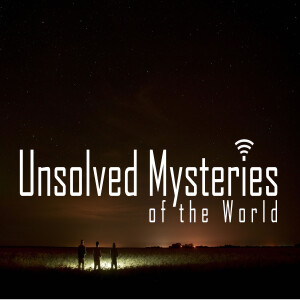
Unsolved Mysteries of the World
Society & Culture

In the early 1900s, a discovery was made in Australia that would ignite much controversy. Etched in rocks in Queensland were a multitude of hieroglyphs that resembled those found in ancient Egypt. For years the glyph's were a center of controversy – to those witnessing the glyphs first hand, it was proof that ancient Egyptians had visited Australia. To Egyptologists, the glyphs were deemed some sort of forgery and the general archaeological consensus is that they were simply carvings done in the 1920s by enthusiastic people fascinated by mummies. But then artifacts such as large stone carving started being discovered as well as small artifacts like amulets.
Again, they were simply dismissed as forgeries and that they were most likely carved in rock, forgotten and discarded for nearly 100 years. There are, however, some artifacts showcased in museums in Australia that perhaps show Ancient Egyptian symbols such a Aten Sun carved into sacred stone.
In 1912, a farmer digging a fence hole found a bronze coin deep in the ground minted in Egypt between 221 and 204BC. Skeptics claimed that although the coin was indeed real, it must have been dropped there by a miner who had collected it on world travels and had it accidentally fall into the ground and buried by years of soil.
But beyond the glyphs and the carved rocks and the multitude of artifacts and the misplaced coin lies many bigger artifacts and according to some researches even lost pyramids.
This is Unsolved Mysteries of the World Season 5 Episode 14 Ancient Egyptians in Australia
More Episodes
 2017-09-24
2017-09-24
 10
10
 2017-09-17
2017-09-17
 12
12
 2017-09-10
2017-09-10
 5
5
 2017-09-06
2017-09-06
 4
4
 2017-08-27
2017-08-27
 11
11
 2017-08-23
2017-08-23
 15
15
 2017-08-20
2017-08-20
 11
11
 2017-08-16
2017-08-16
 13
13
 2017-08-09
2017-08-09
 28
28
 2017-08-07
2017-08-07
 30
30
 2017-08-06
2017-08-06
 19
19
 2017-08-02
2017-08-02
 5
5
 2017-07-30
2017-07-30
 4
4
 2017-07-29
2017-07-29
 3
3
 2017-07-26
2017-07-26
 10
10
 2017-07-23
2017-07-23
 4
4
 2017-07-16
2017-07-16
 3
3
 2017-07-09
2017-07-09
 10
10
 2017-07-02
2017-07-02
 11
11
Create your
podcast in
minutes
- Full-featured podcast site
- Unlimited storage and bandwidth
- Comprehensive podcast stats
- Distribute to Apple Podcasts, Spotify, and more
- Make money with your podcast
It is Free
- Privacy Policy
- Cookie Policy
- Terms of Use
- Consent Preferences
- Copyright © 2015-2024 Podbean.com





